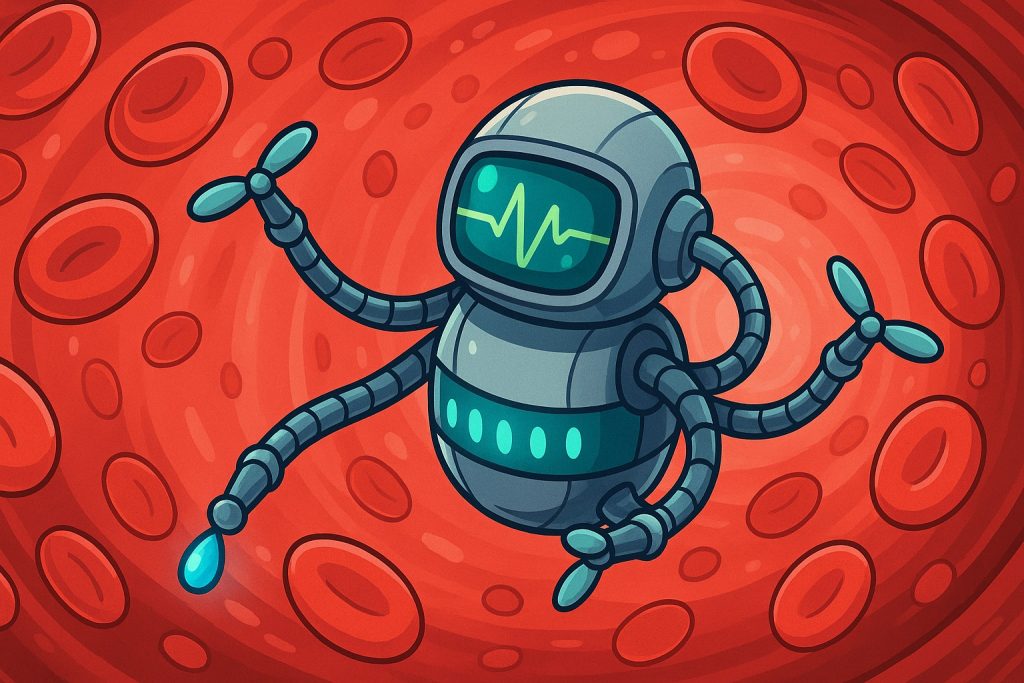Imagine tiny machines flowing through your veins, diagnosing diseases, repairing cells, and even delivering medicine exactly where it’s needed. Once considered pure science fiction, nanorobots in the bloodstream are now moving closer to becoming a real part of modern medicine.
But how close are we really to this future?
What Are Nanorobots?
Nanorobots, or nanobots, are microscopic machines designed to operate at the scale of nanometers — a thousand times smaller than the width of a human hair. In medical applications, they are envisioned to be programmable devices that can navigate the human body, interact with cells, and carry out precise tasks.
These machines could:
- Detect and destroy cancer cells
- Repair damaged tissue
- Clean arteries of plaque
- Monitor vital signs from inside the body
- Deliver essential directly to targeted cells
How Do They Work?
Nanorobots could be made from materials like DNA strands, biocompatible metals, or carbon-based structures. They would be powered by chemical energy from the body or miniature batteries and guided by magnetic fields, light, or internal sensors.
Several prototypes have already been tested in lab environments. For example, DNA origami robots have been shown to target and shrink tumors in mice by delivering essential with extreme precision.
Potential Benefits
- Extreme accuracy: Reduces side effects by targeting only the problem area
- Minimally invasive: Enters the body via injection instead of surgery
- Early detection: Nanobots could monitor for disease at the molecular level
- Continuous treatment: Some could remain in the body to provide ongoing care
Current Limitations
Despite progress, fully functional medical nanorobots are not yet ready for widespread use. Key challenges include:
- Powering and controlling robots inside the body
- Ensuring biocompatibility and safety
- High manufacturing costs
- Ethical and regulatory concerns
Still, research is advancing quickly, especially in cancer therapy, imaging, and essential delivery.
So — Science Fiction or Near Future?
It’s a bit of both. While we don’t yet have armies of nanobots repairing our arteries, the technology is no longer theoretical. Some early forms already exist in experimental treatments and may become common within the next 10–20 years.
As materials science, biotechnology, and robotics continue to converge, the vision of nanobots flowing through your bloodstream could become a standard part of modern healthcare.
Glossary
- Nanorobots (Nanobots) — machines that operate at the nanometer scale (1 billionth of a meter)
- DNA origami — folding strands of DNA to create nanoscale shapes or machines
- Biocompatible — safe for use inside the human body without causing harm


